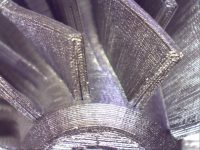Wet Blast cabinets designed by Wet Technologies are a perfect match for Additive Manufacturing, particularly for parts being made on demand—even in the field. Applications include surface smoothing, preparation for inspection and protective coatings. Because they’re compact, closed-loop, dust-free systems, they can be used virtually anywhere.
Manufacturing at the Point of Need
In the March 2019 issue of Army AL&T magazine, Steve Stark writes, “In theory, instead of traveling to an operational environment with tons of gear, units could go with just enough equipment to get established, then set up machines that could additively produce on the spot the equipment or structures they need from local resources. That–manufacturing at the point of need–is a major feature of additive.”
According to Nikodinovski,1 “A lot of the things we’ve been doing are just basic one-for-one replacement.… Can additive be used to supplement the sustainment process, where I can just, say, print three parts and save all the time it would take to find vendors or set up the tooling?”
Precise, Repeatable, Uniform Post-Processing
 Jeff Gaddes, mechanical engineer at AMRDEC2, says, “In the end, … “about 70 percent of the work is in the post-processing…” That’s where Wet Technologies comes in. Precise, repeatable, uniform surfaces—including internal passages. Portability. Sustainability. Flexibility to handle parts of various sizes, materials, and shapes in a single cabinet. All without clumsy dust collectors and cumbersome PPE.
Jeff Gaddes, mechanical engineer at AMRDEC2, says, “In the end, … “about 70 percent of the work is in the post-processing…” That’s where Wet Technologies comes in. Precise, repeatable, uniform surfaces—including internal passages. Portability. Sustainability. Flexibility to handle parts of various sizes, materials, and shapes in a single cabinet. All without clumsy dust collectors and cumbersome PPE.
“…The manufacturing can take place in days instead of weeks,” according to Edward Flinn. 3 Read more about the promise of Additive Manufacturing at the point of need at https://www.army.mil/article/216555/complex_geometry or ask us for more information.
1 Mike Nikodinovski is a mechanical engineer and additive expert at the U.S. Army Tank Automotive Research, Development and Engineering Center (TARDEC)
2 AMRDEC produces each part on a laser-powder bed machine, then goes post-production.
3 Edward Flinn, director of advanced manufacturing at Rock Island Arsenal








